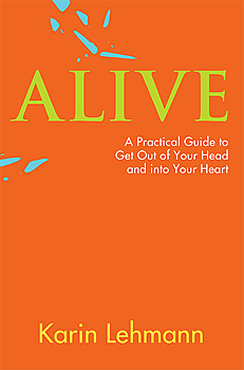“What is necessary to change a person is to change his awareness of himself.” ~Abraham Maslow
Coaching yourself is quite different from working with a coach.
In self coaching a new degree of intensity and discipline is added to the process. The outside guide who keeps you focused and provides you with feedback is replaced with an inner guide. Self-awareness and the willingness to take an honest look at yourself are key in the self coaching process.
This can be humbling (coming to terms with your shortcomings) as well as terrifying (accepting your brilliance). Accepting yourself for who you are is daunting. You realize that you can have anything you want and that the only person keeping you from living your dream is you.
With more clarity you get a taste of the vibrant being you want to become and you realize that some of your old habits will have to go. To become your best self, you have to clean up your act. The question is, how?
Below I am sharing three steps that have helped me in finding and changing my own set ways.
Three Steps to Change a Habit
Step 1: Discover
Before you can change a habit you have to recognize it. That’s where the self coaching process comes in. By observing yourself you become more sensitive to your environment and the impact you have on people. You start to see how your habits shape your behavior.
For example, you may realize that you have a certain way of turning people off by trying to win their approval. Or, that you like to have the last word in any conversation, or, that you want to be right at all times. Recognizing your limiting behavior is the first step in changing your ways. Once the pattern becomes clear, ask yourself these questions:
How am I using this habit? Is it making me a better person? Is it serving other people? What triggers it and how is it playing out?
Be really honest with yourself. Once you are clear on what you are doing, move on to the next step.
Step 2: Accept
The second step in changing your habit is to embrace it. Be clear on what you are doing, how you are doing it and wholeheartedly accept it. Look out for hidden excuses, denial and blame. It’s easy to pretend you have no control over the matter or ignore what you are doing altogether.
After you have run out of options, you’ll come to a place of surrender. At this point you are ready for step three.
Step 3: Change
Once you accepted your habit, you can let it go. Yet, old habits die hard and some can be very persistent. The best way to get rid of it is to set up some rules for change. Here is how it works:
A few years ago I had developed a tendency to coach people whether they asked me to or not. It was something I did quite often and it wasn’t always appreciated. Once I realized what I was doing I set up some rules for myself: For one week, every time I interfered in someone’s life without their permission, I pointed it out to them and apologized for it. In addition, I did 10 push-ups for each act of unsolicited coaching. This may sound silly, but it worked. By the end of the week I had not only gotten stronger arms, I had also learned to stop myself from meddling in other people’s lives.
My tip: Make sure your rules are fun as well as challenging. If you set the bar too low, chances are you won’t put in the effort to make the adjustment.
What habits would you like to change? Please share with us on my facebook page or in the comment section below. You can also write to me. I’d love to hear from you.
As always, thank you for reading.
Karin
***


